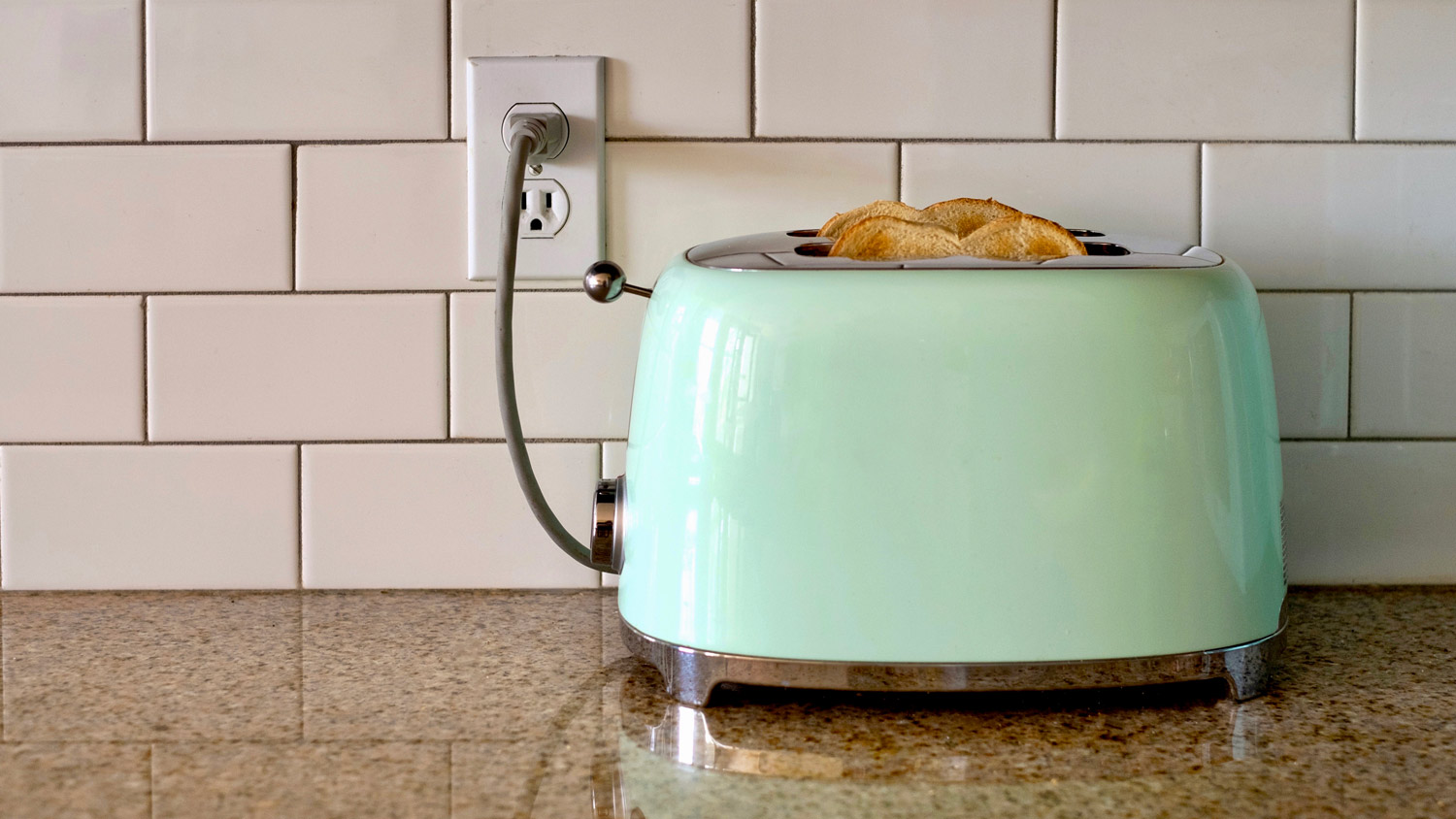Don’t Know Where to Put Electrical Outlets? Check Out These 8 Ideas
Power up every room of your home


Most homes in the U.S. have around 75 electrical outlets.
You need an outlet every 6 feet at the floor line in areas designated as living spaces.
Keep outlets at least 3 feet horizontally and 8 feet vertically away from bathtubs and showers.
Customize your electrical outlet locations based on your home use and needs.
Does your home feel like a spider web of extension cords? Do your appliance plugs rotate through your single kitchen socket like a merry-go-round? You’re not alone. These issues are why it’s so important to learn where to put electrical outlets.
The average American home has about 75 electrical outlets. The total number of outlets is important, but, as you so painfully understand, so is their specific placement. When deciding where to place your outlets, remember that they’ll all have to meet strict electrical code requirements. We recommend working with a professional electrician near you to ensure your installation is up to code and you and your home are safe from any electrical hazards.
Ready to get started? Use our list of the best places to consider when installing outlets in your home as inspiration.
1. Living Room
The living room is where you should unwind, not an extension cord. Make sure you can power through a relaxing night by installing your living room outlets:
In the middle of every wall
In the corners of each seating area
Near the fireplace mantle (to display holiday decor)
In the center of larger rooms where furniture is away from walls (to power lamps and charging stations)
Higher up on a main wall (to power a mounted television)
According to the National Electrical Code® (NEC), you must place outlets every 6 feet along the floor line of any room with dedicated living space. You can use this measurement as a guide when determining how many outlets your living room needs for optimal functionality.
2. Bedroom

When placing bedroom outlets, consider how many people will be using the room. Bedrooms sleeping two people likely need more outlets than a single-sleeper bedroom.
Place bedroom outlets:
On every wall
Higher up on a main wall (to power a mounted television)
On each side of a bed (for nightstand appliances)
Inside a walk-in closet (for irons or clothing steamers)
Keep in mind that a bedroom is required to have at least one light source controlled by a switch. To maximize the functionality of a bedroom without an overhead light, consider installing switched outlets, also called half-hot outlets. These have one “hot” receptacle that’s always on and one plug-in that you can control with a switch. This can make it easier to control a room’s lighting without having to manually plug and unplug a lamp all the time.
3. Bathroom
Water and electricity don’t mix. For safety, the NEC requires that all bathroom outlets be ground-fault circuit interrupters (GFCI), which can protect you from electrical shocks.
Consider placing bathroom outlets:
Near each sink (cords should never have to cross over a sink)
Inside medicine cabinets (for electric toothbrush charging)
Inside drawers (to charge hair tools and electric razors out of sight)
Knowing where to place outlets in your bathroom is important, but knowing where not to place them is equally valuable knowledge. Keep receptacles at least 3 feet horizontally and 8 feet vertically away from showers and bathtubs. To prevent cords from getting wet, install outlets at least 1 foot to the left or right of a sink.
4. Kitchen

The heart of the home deserves extra attention when planning outlet placement. Kitchen outlets can simplify the cooking process while you create happy memories making your favorite meals.
The best places to put outlets in your kitchen include:
Every 2 feet along each counter
Inside the pantry (for small appliances or cordless vacuum charging stations)
On your kitchen island
Above kitchen cabinets (for hiding light cords, sound systems, and security equipment)
In the back of cupboards or drawers
Under cabinets
Behind appliances
Unless you’re building a custom accessible kitchen, outlets should never be placed more than 20 inches above a countertop. All outlets within 6 feet of a water source (like the sink or dishwasher) must be GFCI outlets, as well, according to the NEC.
5. Home Office
The 2020 work-from-home surge made dedicated office spaces a must-have for many people. For a neat and efficient workspace, home offices need outlets installed:
On every wall
At levels based on the height and clearance of workspaces, not necessarily uniform with other rooms in the home
Inside drawers and cabinets (to cut down on cord clutter)
With USB ports (for built-in device charging capabilities)
When your home office is a converted bedroom, be on the lookout for signs of an overloaded circuit. If your lights dim when the printer kicks on, you may need more electrical work than just adding a few outlets. Speak to a professional electrician about updating your electrical panel if your office has trouble keeping up.
6. Garage
Garages aren’t only for storage. Make sure you can tackle your next DIY project by installing garage outlets:
On the ceiling for a garage door opener (unless the space is already hardwired for one)
Near parking stalls (to charge electric-powered vehicles)
Near workspaces (to operate small tools and stand-alone machines)
In a 2023 update to the NEC, you’re now required to make all outlets in garages GFCI outlets. Whether you’re installing outlets for the first time or updating current outlets to meet the new requirements, it may help to know that garage outlets can boost your home’s value and give your property an edge in a competitive market.
7. Outside
Spending 120 minutes outside per week can have positive effects on your overall health and well-being, according to a study from Scientific Reports. Enjoy soaking up some sunshine and make sure your outdoor living space is fully powered by installing outlets:
On every exterior wall (to power yard maintenance tools and holiday decorations)
On either side of the front door (for decorative lighting or security equipment)
Near outdoor living spaces (to power lighting, heating elements, or entertainment equipment)
In the area underneath your roof’s overhang (to hide wires from holiday lights or security equipment)
Because outdoor outlets will come into contact with all the elements that Mother Nature has to offer, only GFCI outlets are permitted outside. Pros also recommend that you install waterproof covers for outdoor outlets. As you design your dream outdoor space, look for covers made to fit over extension cords.
Just keep in mind that extension cords should only be used for temporary holiday displays or power tools for projects. Never use an outdoor extension cord as a permanent source of power.
8. More Places to Put Electrical Outlets
While we covered most of the basic spots for electrical outlets, adding outlets in a few more areas can make your life easier. Consider the following locations for installing electrical outlets:
In the hallway (for those spaces where your vacuum cleaner has a hard time reaching)
In storage closets (for extra lighting)
On stair railings (for LED string lights)
In the laundry room (for appliance hook-ups)
In your basement (for a basement conversion)
In the attic (for Christmas lights, extra lighting, electric attic fans, or additional living space)
Think Strategically About Where to Place Outlets in Your Home
Ready to eliminate the extension cord for good? Knowing where to put electrical outlets is step number one. Properly placed outlets can help boost your home’s functionality and aesthetics, and it's always possible to add additional outlets down the road.
Before going with a generic outlet layout, take some time to think about what’s most important to you and your family. Where will you spend the most time? What room has the most electronics in it? Ask yourself these questions and more before calling in a pro to help you create the perfect living space.
Rochel Maday contributed to this piece.
The best place to put an electrical outlet depends on your needs. A good rule of thumb is to install outlets every 6 feet in large rooms. Hallways over 10 feet long need one electrical outlet minimum.
If you find yourself needing extra plug-ins for all of your gadgets, you may want to increase the number of electrical outlets in your room. When adding outlets, keep in mind that older homes could have outdated electrical panels. In these cases, you may need a pro to upgrade you from 100-amp to 200-amp service before increasing the power load.
You should never install an outlet within 3 feet horizontally and 8 feet vertically of a shower or bathtub. Other spaces where you can’t install outlets include in the “face-up” position on horizontal surfaces and behind doors where you can open them completely against the surface of that wall. lso consider your home’s capacity and layout when adding electrical outlets, and contact your local electrician for advice if you’re unsure.





- Home Generator Repair
- Lamp Repair
- Electric Repair
- Generator Installation
- TV Antenna Services
- Emergency Electricians
- Commercial Electricians
- Attic Fan Installation
- Attic Fan Repair
- Exhaust Fan Installation
- Electric Inspectors
- Subcontractors
- Electrical Construction
- EV Charger Installer
- Chandelier Installation
- Doorbell Installation
- Bathroom Fan Installation
- Ring Installers
- Electrical Panel Upgrade










